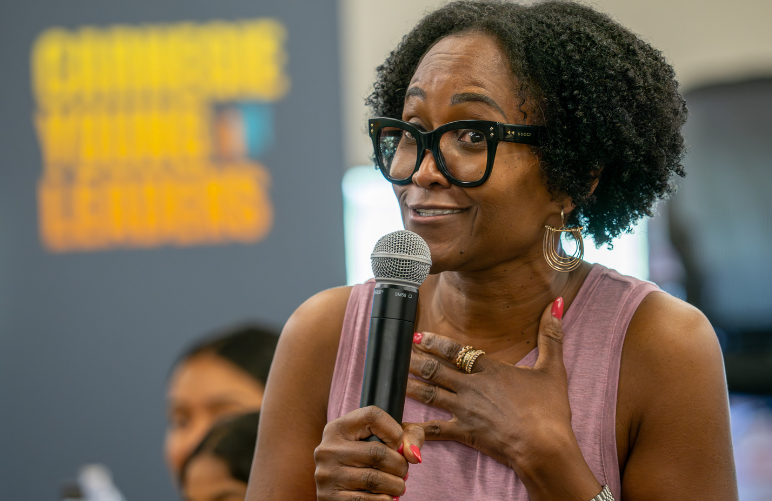What We’re Missing About Gen Z’s Civic Energy
November 18, 2025
Share

When young people don’t show up the way we expect, it’s easy to assume they don’t care. But that couldn’t be farther from the truth.
Our new survey, Gen Z Civic Vibe Check, shows that 9 in 10 young people care deeply about their communities and feel a responsibility to get involved. And they’re not just posting about it. Seventy-seven percent say they talk about issues face-to-face with family and friends. That’s more than those who debate online (46%) or share posts on social media (60%).
From my work with young people, I’ve seen this up close. At the Our Voices Summit, I watched them engage in difficult conversations with real vulnerability. Of course, they hold strong beliefs, but they also listened—with respect and open minds—to perspectives that challenged them. I heard things like, “That’s not what I’ve experienced, but I hear you. Here’s another way to look at it.”
That’s not apathy. That’s leaning in.
Still, two big barriers get in their way. Some say they don’t know how to get involved (37%) or don’t feel like they can make a difference (33%).
But older adult allies shouldn’t see this as a sign of disengagement. Instead, it’s an invitation. Young people are telling us they want to contribute. They are just asking us to trust them, guide them as needed, and show them how their efforts count.
We see this every day at C&S. Through Carnegie Young Leaders for Civic Preparedness, we’re helping young people take the first steps on their civic journey. For those already established, we help them go further with coaching, community, and funding. And the demand for this is real. We received far more impressive Carnegie Young Leaders team applications than we could accept—we could only choose 100!
The same is true for our Youth Advisory Council. More than 200 young people applied for just a handful of spots. Young people are begging for more opportunities like these, but need opportunities and multiple pathways to get there.
So what can the rest of us do—donors, educators, employers, parents, college presidents—to meet them halfway?
- Give them a starting point. Lower barriers. Make it easy and fun to join in.
- Create space for real talk. Model how to have conversations across differences. Then let them practice these skills at home, at school, and at work.
- Connect civic action to real life and let them do it with friends. Support youth-driven programs that allow them to take on authentic issues they care about – and that affect them – together.
- Lean in. Build intergenerational teams and commit to learning as much as sharing your wisdom and experiences.
- Show the impact. Share stories of what’s working and how you are overcoming challenges together – and let young people tell them in their own words.
History provides countless examples of young people leading change. These new survey results confirm that they want to invest their time and energy into improving their communities. We must meet young people where they are; provide support, opportunities, and pathways, and we might just rediscover what civic energy can look like at its best.
Stay Engaged
Get More News
Join our mailing list to get more news like this to your mailbox.
Support Our Work
Help us invest in the talent, ideas, and networks that will develop young people as effective, lifelong citizens.
Ways to Support Us